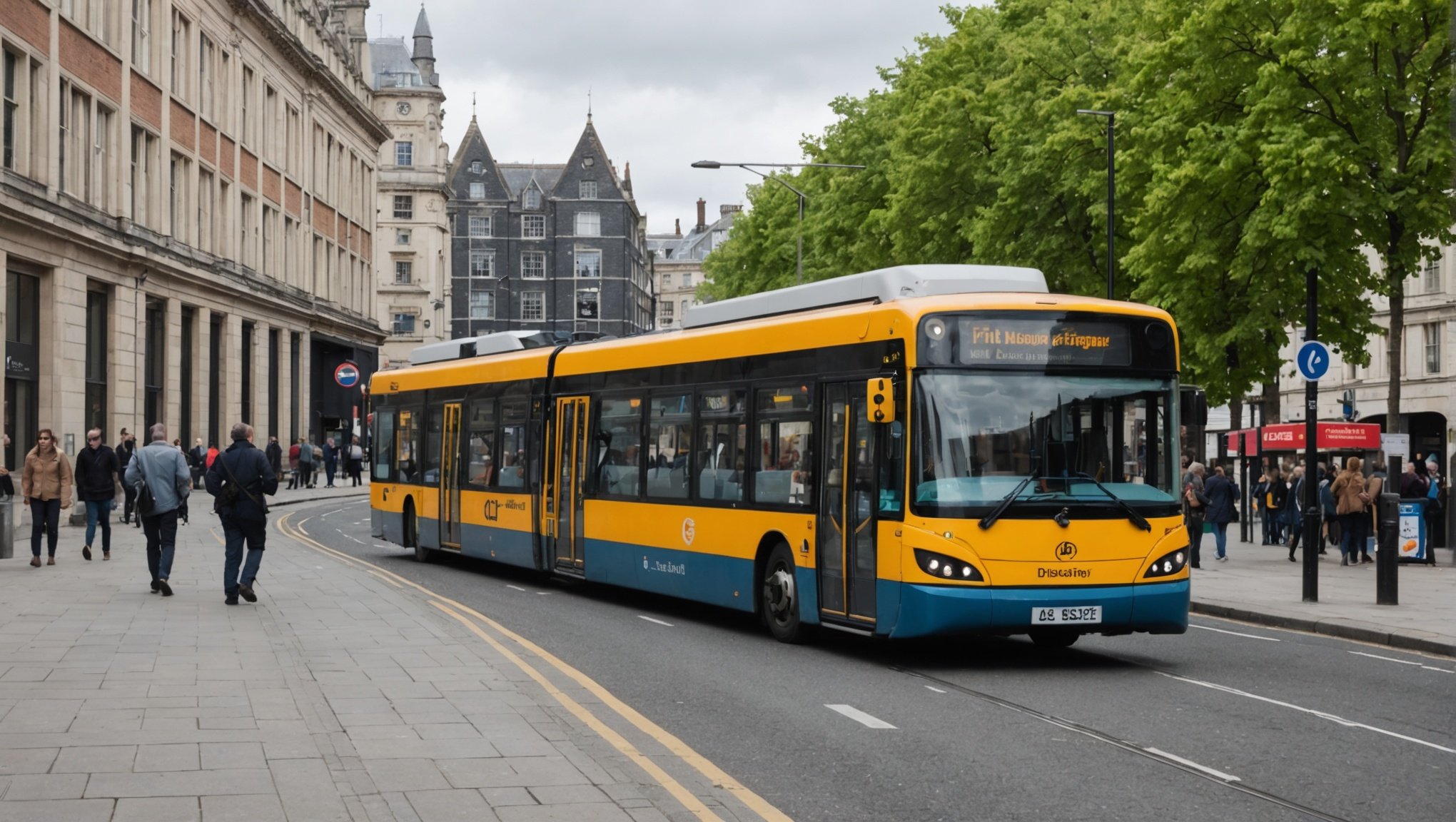The landscape of public transport in the UK is undergoing a remarkable transformation, thanks to the infusion of Artificial Intelligence (AI). As traffic congestion and delays continue to plague our road networks, AI offers a beacon of hope for enhancing efficiency and safety. Through sophisticated algorithms and data-driven approaches, AI is revolutionizing how we manage and utilize transportation systems. This article delves into the multifaceted role AI plays in revitalizing public transport across the UK, offering a clear perspective on its impact and potential.
AI-Driven Traffic Management Systems
AI-driven traffic management systems are at the forefront of creating smoother and more efficient public transport experiences. By harnessing real-time data from various sources, these systems can predict and mitigate traffic congestion, ultimately saving valuable time for commuters and public transport vehicles.
Also read : How Are UK Tech Startups Leveraging AI for Predictive Analytics?
The integration of machine learning algorithms allows these systems to analyze real-time traffic conditions, detecting patterns and predicting potential bottlenecks. For example, AI can dynamically adjust traffic light signals based on road conditions, ensuring a more streamlined flow of vehicles. This not only reduces the time spent idling in traffic but also lowers fuel consumption and emissions, contributing to a greener environment.
Moreover, AI-based systems can provide public transport operators with real-time updates, enabling them to reroute buses or trains to avoid congested areas. Passengers benefit from this by experiencing shorter travel times and fewer delays.
In the same genre : What Are the Latest AI Applications in UK Renewable Energy Management?
In essence, AI-driven traffic management systems act as the nerve center of modern urban mobility, orchestrating a symphony of vehicles to move harmoniously through the intricate road networks. By doing so, they significantly enhance the overall efficiency of the UK’s public transport system.
Predictive Maintenance and Safety
One of the critical aspects of maintaining a robust public transport system is ensuring the safety and reliability of vehicles. AI has proven to be indispensable in this regard, particularly through its role in predictive maintenance. By analyzing a plethora of data points collected from sensors embedded in vehicles, AI can predict potential failures before they occur, averting catastrophic breakdowns and improving safety.
Predictive maintenance relies on machine learning models that process historical and real-time data to identify patterns indicative of wear and tear. For instance, AI can monitor engine performance, brake efficiency, and other critical components, flagging anomalies that require immediate attention. This proactive approach enables transportation agencies to schedule maintenance during off-peak hours, minimizing disruptions to public services.
Furthermore, AI enhances safety by facilitating the development of advanced driver assistance systems (ADAS). ADAS leverages AI to provide drivers with real-time alerts and corrections, keeping vehicles within safe operational parameters. This could include lane departure warnings, collision avoidance systems, and even autonomous driving capabilities.
By focusing on safety and reliability through predictive maintenance and ADAS, AI ensures that the UK’s public transport system is not only efficient but also safe for all commuters.
Optimizing Public Transport Scheduling
Effective scheduling is crucial for the efficient operation of public transport systems. Traditional scheduling methods often fall short of addressing the dynamic nature of urban transportation needs. Here, AI steps in with its ability to process vast amounts of data and deliver optimal scheduling solutions.
AI algorithms can analyze real-time demand patterns, accounting for factors like peak hours, special events, and seasonal variations. By doing so, they can optimize bus and train schedules to match the actual demand, reducing wait time for passengers and ensuring that vehicles are neither underutilized nor overcrowded.
Moreover, AI-based scheduling systems can adapt on the fly, making real-time adjustments based on actual conditions. For example, if there is an unexpected surge in demand at a particular stop, the algorithm can dispatch additional vehicles to that location. This adaptability ensures that the public transport system remains responsive and efficient, even in the face of unforeseen challenges.
By leveraging AI for scheduling, the UK’s public transportation network can operate at peak efficiency, providing a real and tangible benefit to commuters. This not only improves the public transport experience but also encourages more people to opt for public vehicles over private cars, alleviating traffic congestion and reducing environmental impact.
Enhancing Passenger Experience
The passenger experience is the cornerstone of a successful public transport system. AI is profoundly transforming this aspect by offering personalized and seamless travel experiences. Through the use of data analytics and machine learning, AI can tailor services to meet the unique preferences and needs of individual passengers.
One of the most significant innovations in this realm is the development of smart ticketing systems. These systems use AI to provide passengers with the most efficient routes, taking into account real-time traffic conditions and schedules. Additionally, AI can offer personalized notifications about delays, alternative routes, and even boarding reminders, ensuring that passengers are always informed and in control of their journey.
AI also plays a crucial role in enhancing accessibility for passengers with disabilities. By analyzing data on passenger movement and behavior, AI can identify areas where improvements are needed, such as more accessible boarding options or better-placed signage. Furthermore, AI-powered applications can assist visually impaired passengers by providing audio descriptions of their surroundings, making public transport more inclusive.
In essence, AI enriches the passenger experience by making public transport more intuitive, accessible, and responsive. This not only improves satisfaction but also encourages more people to utilize public vehicles, further enhancing the overall efficiency of the system.
The Future of AI in Public Transport
As we look to the future, the role of AI in public transport will only continue to grow. Emerging technologies such as autonomous vehicles, blockchain for transportation logistics, and advanced learning algorithms promise to take the efficiency and safety of public transport to new heights.
Autonomous vehicles, for instance, are poised to revolutionize public transport by eliminating human error and optimizing route efficiency. These self-driving vehicles will rely heavily on AI to navigate the complex urban road network, offering a new level of convenience and safety for passengers.
Blockchain technology, when integrated with AI, can enhance the transparency and security of transportation logistics. This combination can streamline ticketing systems, validate passenger identity, and ensure secure transactions, all while maintaining a high level of privacy.
Advanced learning algorithms will further refine predictive maintenance and traffic management systems, making them even more accurate and reliable. These algorithms will be able to process an ever-increasing volume of data, offering deeper insights and more effective solutions.
In conclusion, AI is the linchpin of the future public transport system in the UK. Its ability to analyze data, predict outcomes, and adapt in real time makes it indispensable for enhancing efficiency, safety, and the overall passenger experience. As we continue to integrate AI into our transportation systems, we can look forward to a more efficient, reliable, and convenient public transport network.











